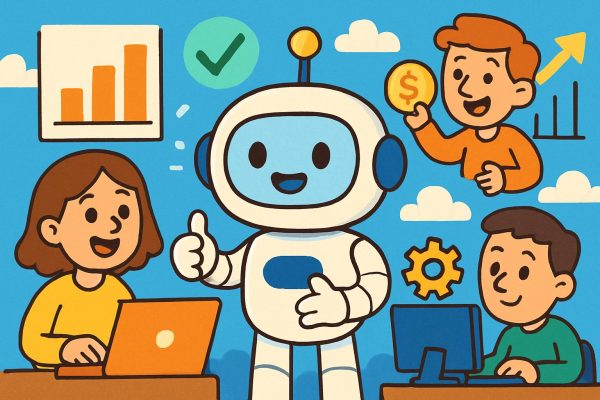Businesses are turning to generative tools for efficiency, but implementing them can be trickier than expected. Some tasks suit automation well, while others demand careful consideration. How can organizations identify the right areas to focus on and avoid potential pitfalls?
Businesses are increasingly examining how they can use generative technologies to improve productivity and streamline operations. But successfully integrating these tools isn’t as simple as flipping a switch. Some tasks are straightforward to automate, while others bring notable challenges. So how do organizations determine where to start and which areas of their operations are worth addressing? Here’s a practical guide to help you find the right business scenarios and avoid common missteps.
Break Workflows Into Manageable Tasks
Not every aspect of a role is suitable for automation, and generative tools are most effective when they focus on specific, clearly defined tasks. For example, a university professor’s job involves a mix of responsibilities. Certain activities like preparing lectures, grading assignments, or designing course materials can be supported with automation. However, more interactive or nuanced duties—such as leading classroom discussions or delivering lectures—don’t translate as easily. By breaking a workflow or role into smaller components, it becomes easier to spot tasks that can benefit from generative solutions and those that may still require human expertise.
Evaluate the Costs of Automation
Understanding the overall costs involved is a critical step. While there are licensing fees or API charges for generative tools, these represent only part of the equation. Other costs—such as the time and resources invested in adapting a tool to a specific use case—can add up quickly. Depending on the task, considerable effort may be required to ensure a high degree of accuracy or to build safeguards against mistakes. For example, tasks involving creative content, like writing ad copy or product descriptions, are often more forgiving of minor inaccuracies. On the other hand, higher-risk scenarios, such as those requiring logical reasoning, factual accuracy, or cause-and-effect considerations (e.g., medical applications), demand robust monitoring systems and higher upfront investments.
Organizations should compare task-specific costs against what it would take to continue performing the task manually. For cases where automation currently seems impractical due to high costs or complexity, revisiting them in the future is worth considering. The capabilities within this space are changing quickly, meaning today’s hurdles may be easier to overcome tomorrow.
Launch Focused Pilot Projects
After identifying tasks that meet the first two conditions, organizations should move forward with small, controlled pilot projects. Whether adapting a commercial tool, integrating an open-source model, or working with vendors providing prebuilt solutions, piloting allows companies to test ideas in a lower-risk environment before broader rollout. It’s important to establish a clear and thorough evaluation process, as building an application of this nature can often involve a lot of trial and error. Testing a wide variety of potential uses helps build familiarity and confidence in implementing these solutions.
Set Yourself up for Success
Once the initial groundwork is done, there are practical strategies organizations can use to maximize the benefits while minimizing risks:
- Create a clear process for reviewing outputs and fixing errors before introducing solutions to customers or internal users.
- Focus on specific applications that align with an organization’s immediate needs. Narrow projects tend to make better first-use cases because they are easier to manage and typically involve lower cost and effort.
- Develop skills across the organization. Encourage team members, even those outside typical technical roles, to deepen their understanding of how these tools work in practice.
- Set expectations realistically by starting with smaller initiatives that can deliver measurable results in the short term. Early progress provides useful insights and sets the tone for broader adoption down the line.
A Practical Approach to Long-Term Adoption
For most companies, the first step in adoption is improving productivity through smaller, lower-risk initiatives that are quick to implement. This approach allows teams to try their ideas, learn from their experiences, and build the confidence needed for more ambitious projects. By understanding where the biggest opportunities and challenges lie, businesses can introduce these technologies in a way that is thoughtful, efficient, and aligned with their broader goals.
—
Image Credit: GPT Image 1 / Neon-Noir.
Make your own custom style AI image with lots of cool settings!
—
I consult with clients on generative AI-infused branding, web design, and digital marketing to help them generate leads, boost sales, increase efficiency & spark creativity.
Feel free to get in touch or book a call.




